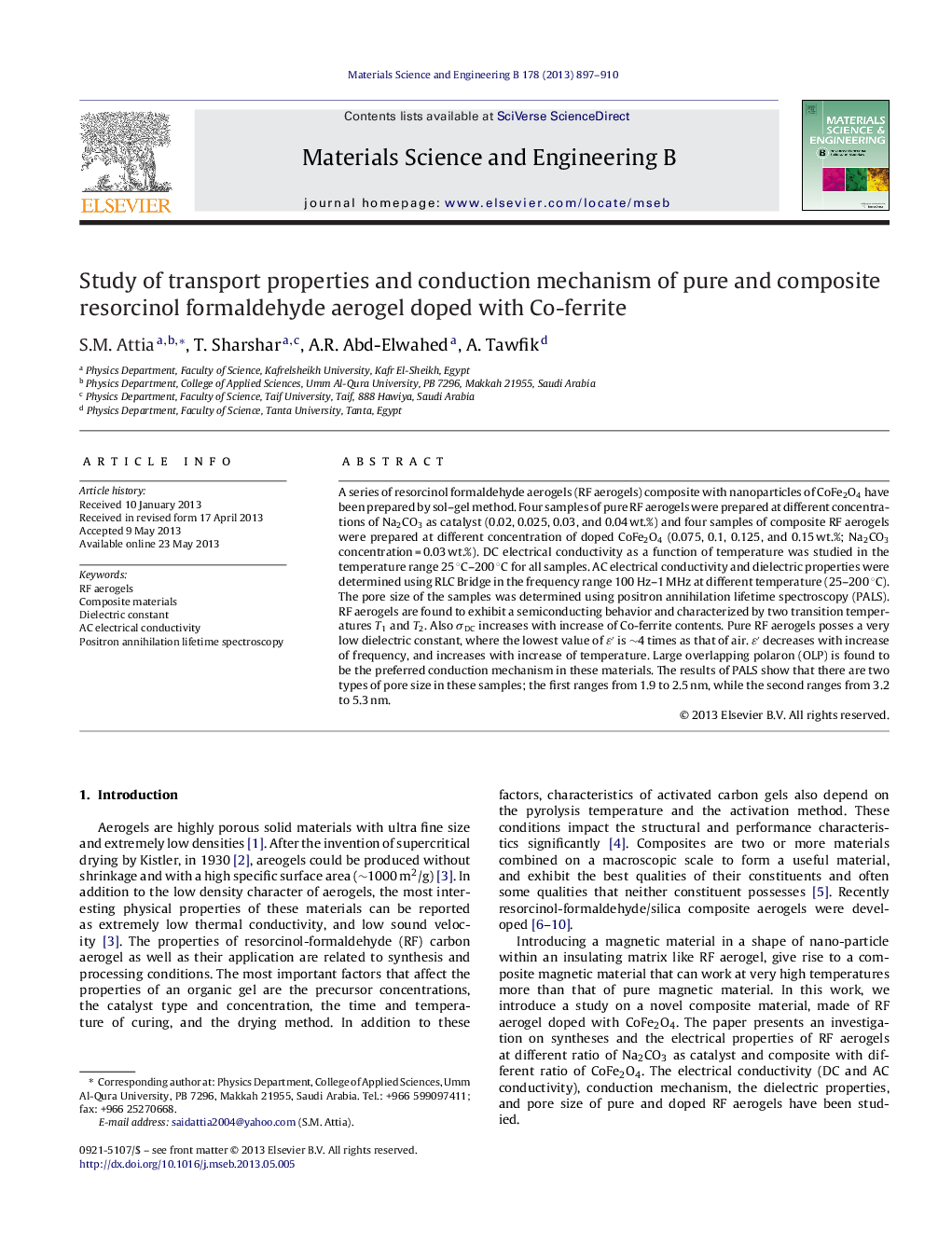| کد مقاله | کد نشریه | سال انتشار | مقاله انگلیسی | نسخه تمام متن |
|---|---|---|---|---|
| 1528836 | 995715 | 2013 | 14 صفحه PDF | دانلود رایگان |

• A novel composite RF aerogels with Co-ferrite were prepared by sol–gel process.
• RF aerogels exhibit a semiconducting behavior.
• The dielectric constant of RF aerogel is very low (4 times as that of air) and can be controlled by adding Co-ferrite.
• Large overlapping polaron (OLP) was found to be the preferred conduction mechanism in these materials.
A series of resorcinol formaldehyde aerogels (RF aerogels) composite with nanoparticles of CoFe2O4 have been prepared by sol–gel method. Four samples of pure RF aerogels were prepared at different concentrations of Na2CO3 as catalyst (0.02, 0.025, 0.03, and 0.04 wt.%) and four samples of composite RF aerogels were prepared at different concentration of doped CoFe2O4 (0.075, 0.1, 0.125, and 0.15 wt.%; Na2CO3 concentration = 0.03 wt.%). DC electrical conductivity as a function of temperature was studied in the temperature range 25 °C–200 °C for all samples. AC electrical conductivity and dielectric properties were determined using RLC Bridge in the frequency range 100 Hz–1 MHz at different temperature (25–200 °C). The pore size of the samples was determined using positron annihilation lifetime spectroscopy (PALS). RF aerogels are found to exhibit a semiconducting behavior and characterized by two transition temperatures T1 and T2. Also σDC increases with increase of Co-ferrite contents. Pure RF aerogels posses a very low dielectric constant, where the lowest value of ɛ′ is ∼4 times as that of air. ɛ′ decreases with increase of frequency, and increases with increase of temperature. Large overlapping polaron (OLP) is found to be the preferred conduction mechanism in these materials. The results of PALS show that there are two types of pore size in these samples; the first ranges from 1.9 to 2.5 nm, while the second ranges from 3.2 to 5.3 nm.
Journal: Materials Science and Engineering: B - Volume 178, Issue 14, 20 August 2013, Pages 897–910